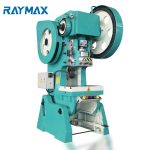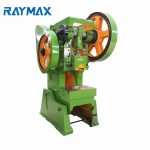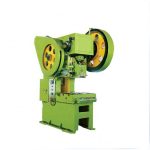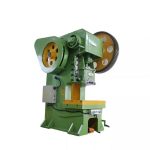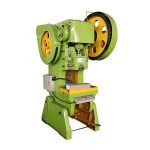Product Function

Working principle of punch:
The original of the punch press is a crank connecting rod mechanism. The motor drives the flywheel. The flywheel drives the big gear through the shaft and pinion. The big gear drives the crankshaft through the clutch Move the connecting rod to make the slider work. The number of strokes per minute and the motion curve of the slider are fixed. The press can be basically divided into bed part, working part and control part All components of each part are installed on the bed. The workshop press is a general press for sheet metal stamping, which can realize various cold stamping processes, such as punching and bending Bending, shallow stretching, etc. This is basically a simple working principle. Main parts of punch
1) Bed part: cast iron casting integrating bed and worktable.
2) Clutch: when the press is not working, the cam of the manipulator pushes the tail of the rotary key to make the crescent Fox of its working part completely fall into the semicircular groove of the crankshaft. At this time, the crankshaft idles and the slider stops at the top dead center; When the press is working, the cam of the manipulator rotates by an angle and leaves the tail of the rotary key. Under the action of the spring, the rotary key rotates 45 °, and the back of the working part enters any of the three circular grooves of the middle sleeve. The clutch is in the combined position, the flywheel drives the crankshaft to rotate, and the slider moves up and down.
3) Slide block: in the slide block, there is a pedal type safety device under the ball bowl in contact with the ball head of the adjusting screw to ensure that the press will not be damaged in case of overload. Open the front square cover to replace the fuse.
4) Moving belt: an eccentric brake belt is installed at the left end of the crankshaft. When the clutch is disengaged, it overcomes the inertia of the reciprocating motion of the slider and ensures that the crankshaft stops at the top dead center.
5) Manipulator: a mechanism that controls the engagement and disengagement of the clutch when operating the manipulator. By changing the connecting position of the manipulator rod, two actions of single stroke and continuous stroke can be obtained.
Product Feature(1) Before work starts: 1) Clean up the work place, clean up the objects irrelevant to the work from the press, and keep the tools properly. Irrelevant personnel shall leave the press site. 2) Check the lubrication of the friction part of the press. 3) Check whether the installation of the die is correct and reliable, and whether there are cracks, dents or cracks on the blade. 4) Only when the clutch is disengaged can the machine be started. 5) Test the working conditions of brake belt, clutch and manipulator, and make several trips. 6) Tools required in preparation

Before work starts:
1) Clean up the work place, clean up the objects irrelevant to the work from the press, and keep the tools properly. Irrelevant personnel shall leave the press site.
2) Check the lubrication of the friction part of the press.
3) Check whether the installation of the die is correct and reliable, and whether there are cracks, dents or cracks on the blade.
4) Only when the clutch is disengaged can the machine be started.
5) Test the working conditions of brake belt, clutch and manipulator, and make several trips.
6) Tools required in preparation
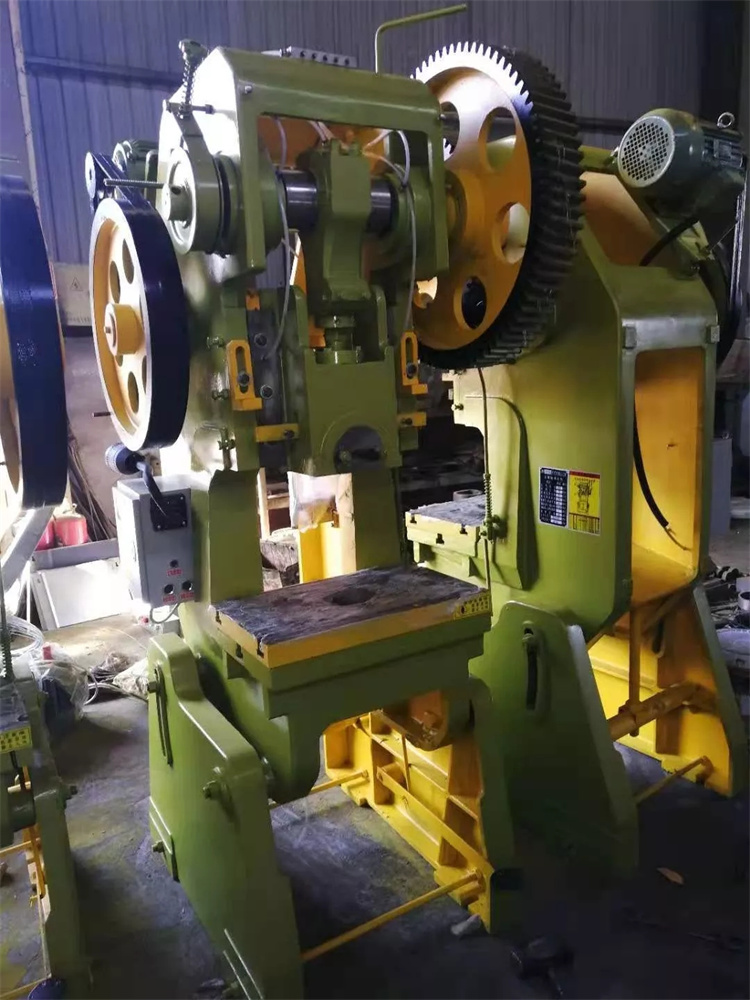 During working hours:
During working hours:
1) Oil the lubricating points regularly with an oil gun.
2) If the workpiece is "stuck" on the die, stop the press and study and deal with it in time.
3) When working, remove the flash on the worktable at any time. Do not take it directly by hand, but use hooks or related tools.
4) When doing shallow drawing, pay attention to the cleaning of sheet metal and add oil for lubrication.
5) Don't put your foot on the pedal of the manipulator often to avoid accidents.
6) When the press is working, do not insert your hand into the die, and do not change the position of the blank on the die.
7) In case of abnormal operation of the press (such as free falling of the sliding block, abnormal knocking sound or noise, poor quality of product oil burr, etc.), stop the machine immediately for research.
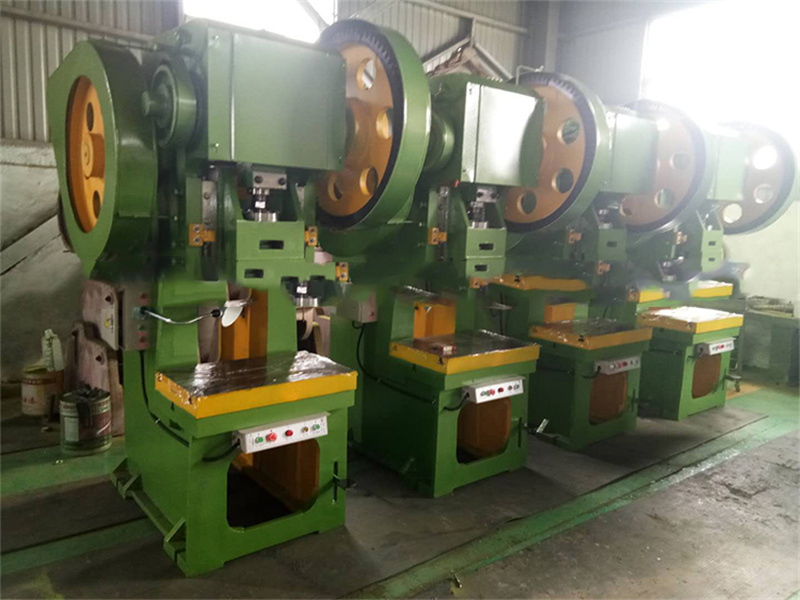
After work:
1) Disengage the clutch.
2) Stop the motor.
3) Pick up tools and stamping parts and put them in suitable places.
4) Clean the metal shaving.
5) Wipe the press and die with a rag, and apply anti rust oil on the edge of the die and the unpainted part on the working table of the press

